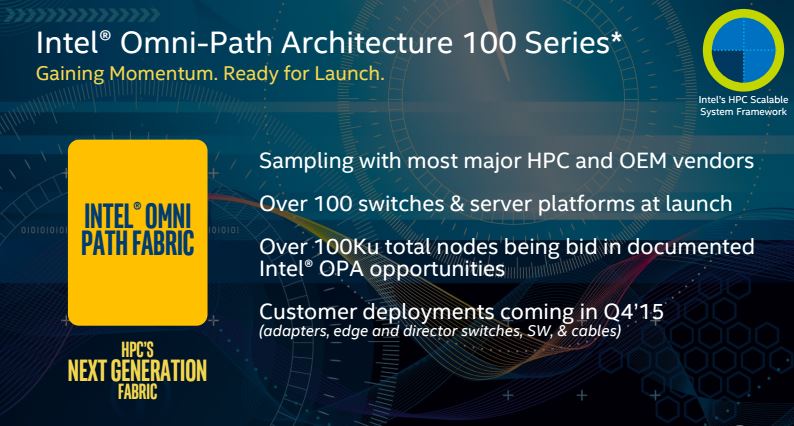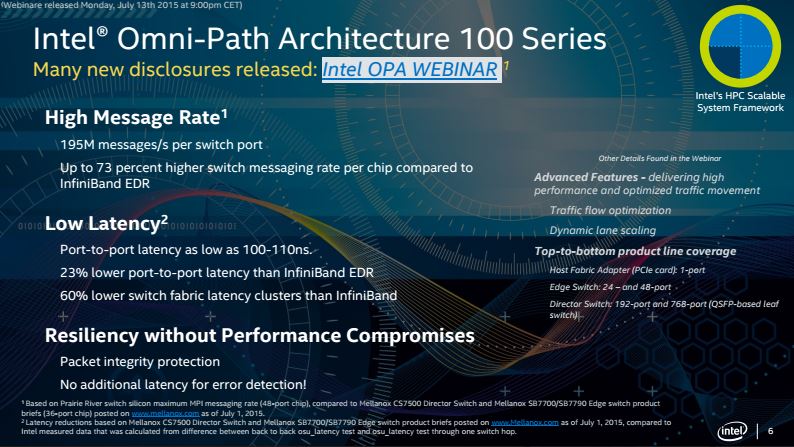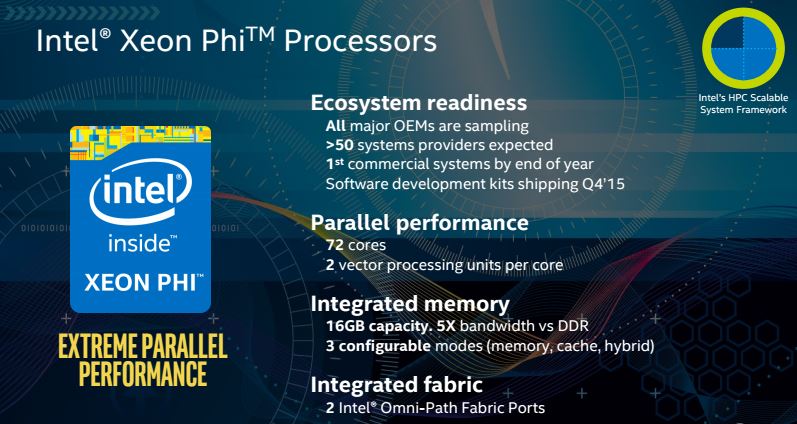When it comes to high-speed networking, perhaps the #1 most anticipated technology is Intel Omni-Path. Today at ISC’15 Intel released details around the ecosystem gearing up for its release. Intel Omni-Path is the new high-performance interconnect aimed first at HPC workloads. New platforms, such as the next-gen Intel Xeon Phi (Knights Landing) will have a version released that will be native Omni-Path enabled, allowing a Xeon Phi node to run freestanding of a Xeon system.
To give the HPC world a view of what is coming, Intel said there are over 100 launch platforms being geared up for launch and that there are over 100,000 total nodes already being bid out by Intel’s partners. HPC installations usually have a decently long RFP process so bidding on installations now means we will expect to see supercomputers running Omni-Path in the not too distant future.

Intel is taking aim directly at Mellanox. Out of a slide deck with 9 content slides for the ISC’15 press briefing, Intel dedicated almost an entire slide to a comparison with Mellanox Infiniband EDR. EDR Infiniband runs at low latency, RDMA and 100gbps speeds. Intel’s first generation interconnect is aiming higher than that.

The high-speed interconnect world has really taken off lately. Whereas many pundits declared the interface dead years ago, the HPC and supercomputing markets have taken off with the technology. Even platforms like the EMC Isilon family were based on the technology due to high throughput and low latencies.
Rumor has it we will see the PCIe cards and edge switches with Intel Omni-Path hit the market over the next 6 months. It is certainly an exciting time to see these interconnect technologies gearing up for a speed war.
For those wondering – Intel did also have a slide on the next-gen Xeon Phi that we should see later this year:

This is fairly well known information at this point, but with built-in dual port Omni-Path, we should start seeing some interesting HPC solutions soon.




